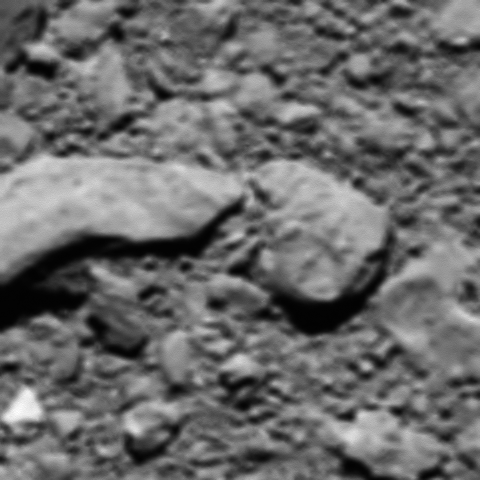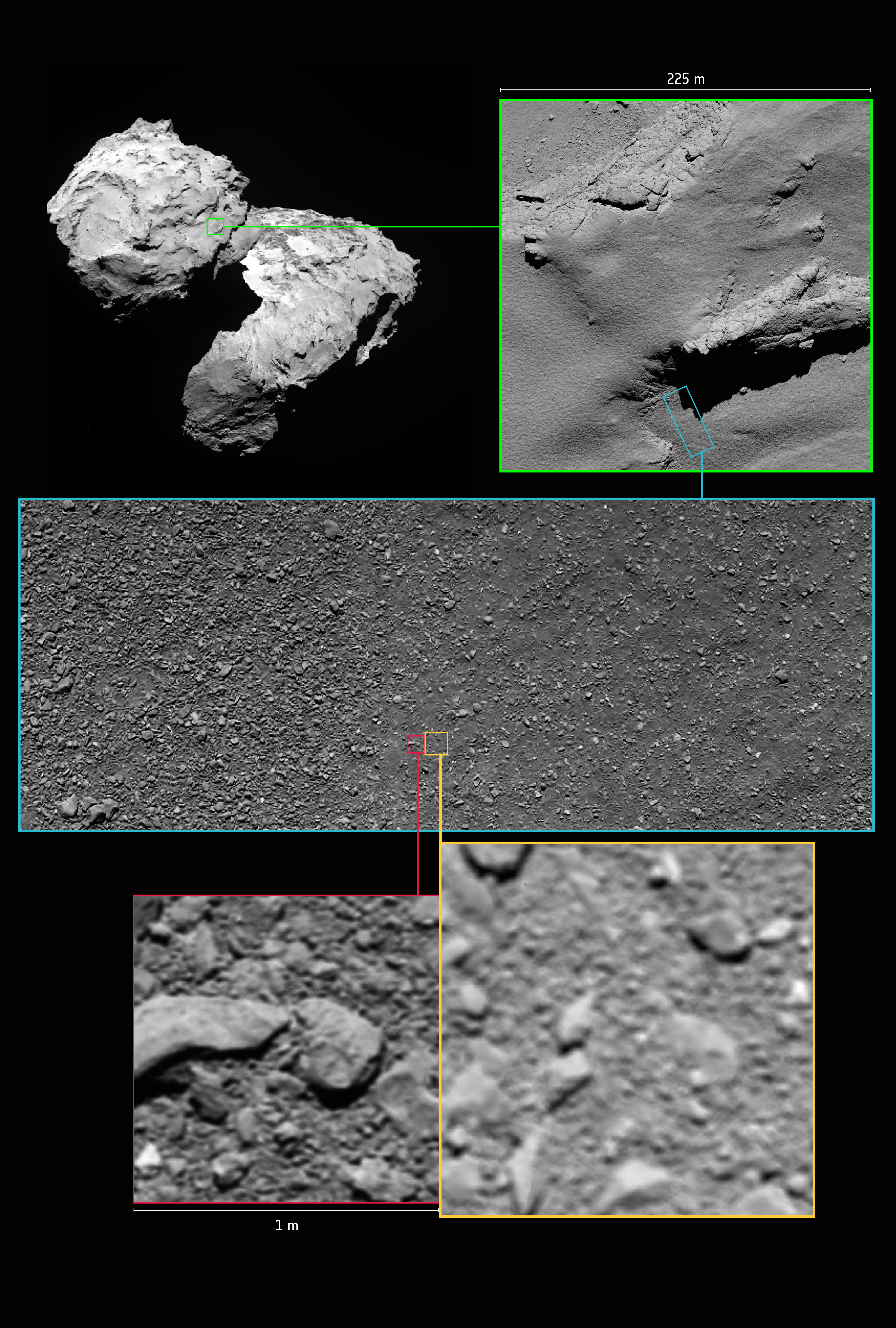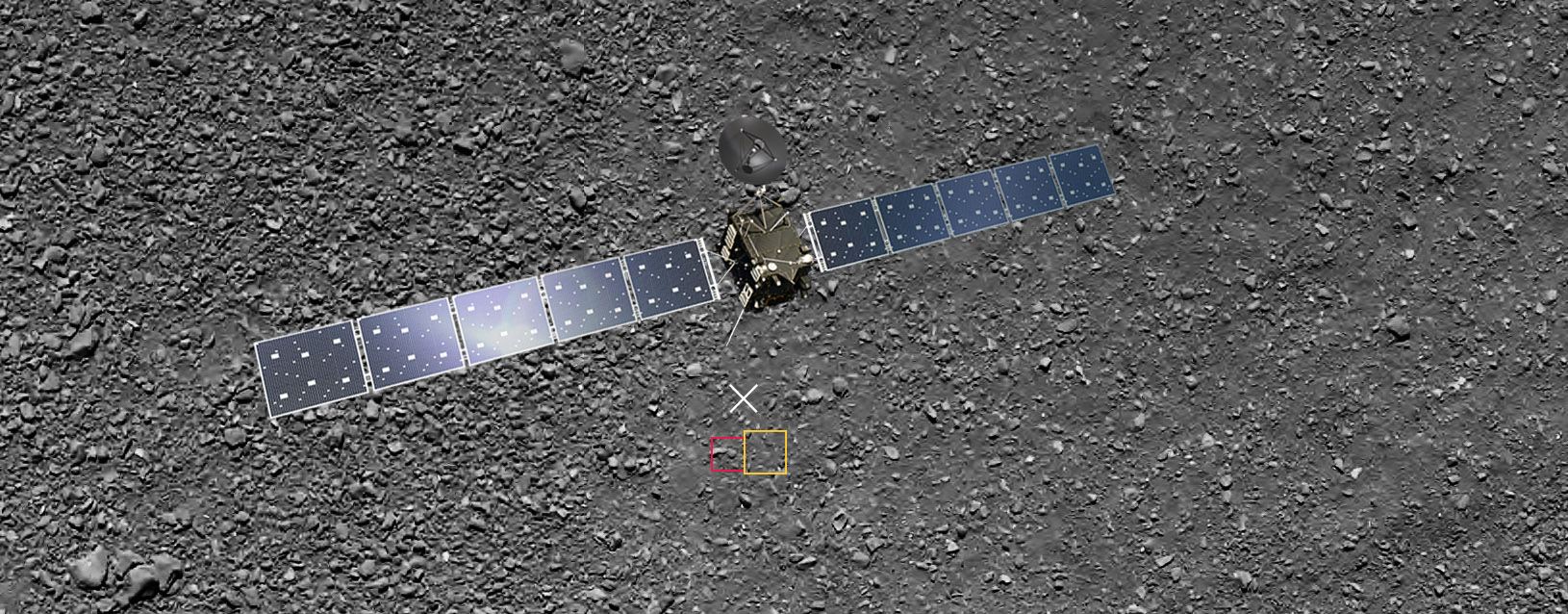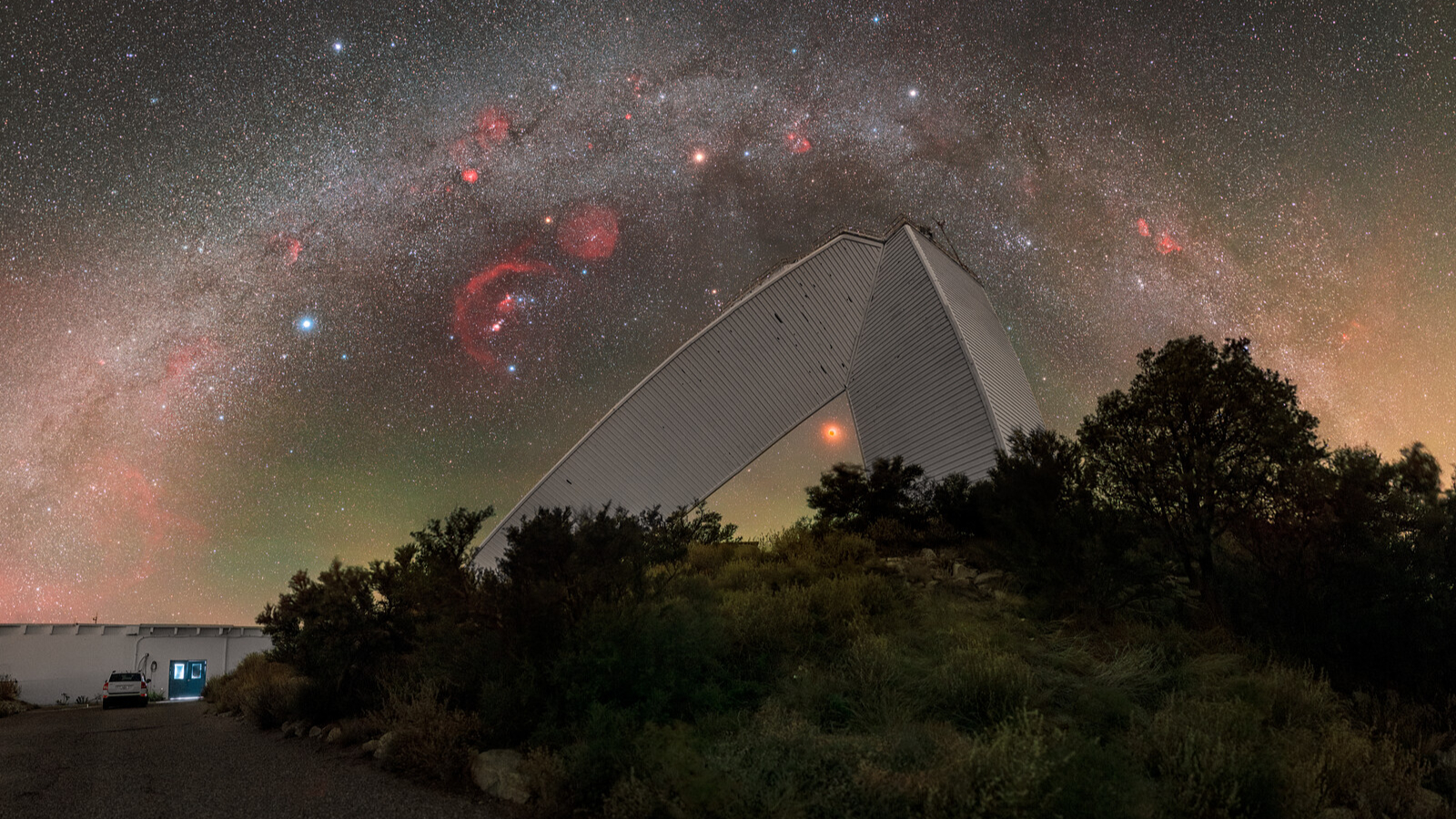Surprise! Scientists Recover Rosetta Spacecraft's Last Photo of Comet 67P

Nearly a year after the Rosetta spacecraft intentionally crashed into a comet, the mission's scientists have discovered a new surprise: the very last image Rosetta took before its cosmic demise.
The European Space Agency (ESA) launched Rosetta in 2004 on a mission to explore Comet 67P/Churyumov-Gerasimenko. It took 10 years for the spacecraft to chase down the comet, after which it spent two years orbiting the icy space rock.
Rosetta's mission came to an end on Sept. 30, 2016, when it plopped down onto the surface of the comet it had studied for years. During its 14-hour descent, the spacecraft's imaging system, OSIRIS, took plenty of pictures of Comet 67P until the very last minute. [In Images: Rosetta Spacecraft's Last Comet Photos During Crash-Landing]
Rosetta's final photo, however, didn't quite make it through to mission control back on Earth, as the transmission was interrupted halfway through, ESA officials said in a statement.
With only half the data for the image, ESA's automatic processing software was unable to generate an image. But Rosetta scientists found a way to outsmart this software and reconstruct the image from that fragmented data.
"The last complete image transmitted from Rosetta was the final one that we saw arriving back on Earth in one piece moments before the touchdown," Holger Sierks, principal investigator for the OSIRIS camera at the Max Planck Institute for Solar System Research in Göttingen, Germany, said in the statement.
"Later, we found a few telemetry packets on our server and thought, 'Wow, that could be another image,'" Sierks added. ESA released the new image Thursday (Sept. 28).
Get the Space.com Newsletter
Breaking space news, the latest updates on rocket launches, skywatching events and more!

The reconstructed photo was taken right before Rosetta collided with the comet, when it was about 65 feet (20 meters) above the surface, and the view spans about 3 feet (1 m). Though the image is a bit blurry, it offers a detailed look at the comet's rocky surface.
Rosetta didn't take any photos of Comet 67P after it hit the comet. Even though it was falling at a speed of only about 2 mph (3.2 km/h), the controlled impact was rough enough to shut down the spacecraft.

Even if Rosetta had survived the impact, it wouldn't have stayed alive much longer. ESA scientists chose to crash it into the comet, knowing that the solar-powered spacecraft would not have enough energy to survive the trek back out into the solar system, where Comet 67P is now heading.
Email Hanneke Weitering at hweitering@space.com or follow her @hannekescience. Follow us @Spacedotcom, Facebook and Google+. Original article on Space.com.
Join our Space Forums to keep talking space on the latest missions, night sky and more! And if you have a news tip, correction or comment, let us know at: community@space.com.

Hanneke Weitering is a multimedia journalist in the Pacific Northwest reporting on the future of aviation at FutureFlight.aero and Aviation International News and was previously the Editor for Spaceflight and Astronomy news here at Space.com. As an editor with over 10 years of experience in science journalism she has previously written for Scholastic Classroom Magazines, MedPage Today and The Joint Institute for Computational Sciences at Oak Ridge National Laboratory. After studying physics at the University of Tennessee in her hometown of Knoxville, she earned her graduate degree in Science, Health and Environmental Reporting (SHERP) from New York University. Hanneke joined the Space.com team in 2016 as a staff writer and producer, covering topics including spaceflight and astronomy. She currently lives in Seattle, home of the Space Needle, with her cat and two snakes. In her spare time, Hanneke enjoys exploring the Rocky Mountains, basking in nature and looking for dark skies to gaze at the cosmos.
